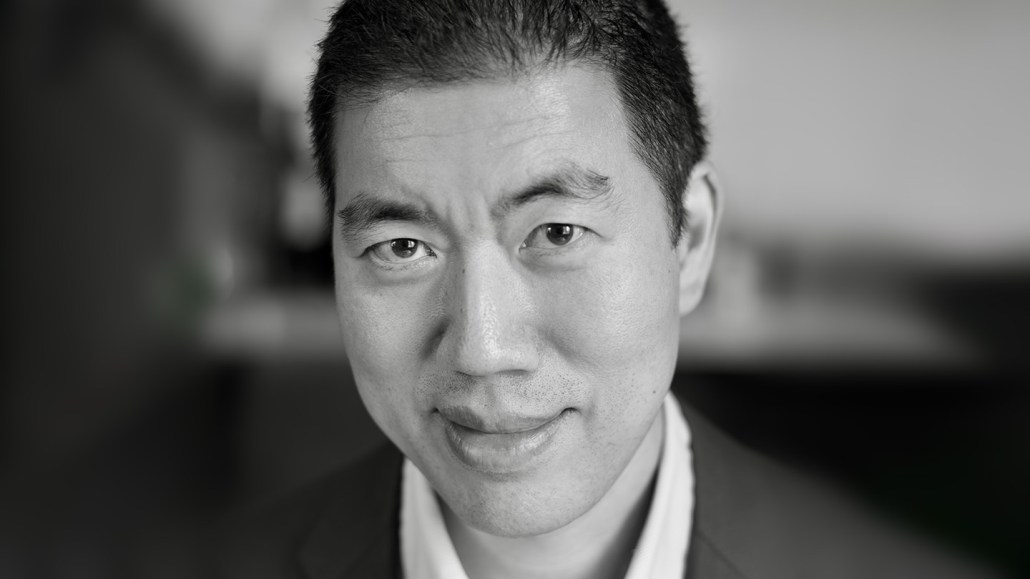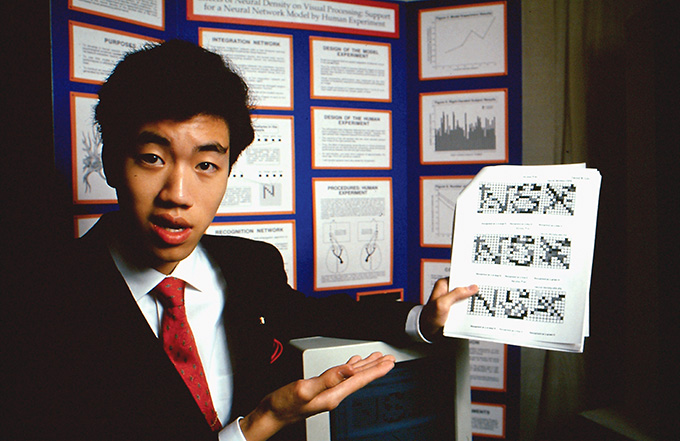Conversations with Maya: David R. Liu

Maya Ajmera, President & CEO of the Society for Science and Executive Publisher of Science News, spoke with David R. Liu, Thomas Dudley Cabot Professor of the Natural Sciences at Harvard University, Howard Hughes Medical Institute Investigator and vice-chair of the faculty at the Broad Institute of MIT and Harvard. Liu is an alumnus of the 1990 Science Talent Search (STS), a program of Society for Science.

How did participating in STS impact your life?
Competing in STS was a transformative event in my life. I grew up in Riverside, Calif., and while I felt that my public high school helped foster my interest in science and writing, I didn’t know how my knowledge compared with other students. When I arrived at STS, I immediately felt impostor syndrome and felt that someone must have made a mistake. Over time, however, I realized that the judges placed a higher value on how quickly and eagerly I could learn, as opposed to how much I knew as a high school senior. That’s a lesson that has strongly influenced my career.
I think the short answer to your question is this: The end result of having a good experience during STS and being named a finalist was gaining confidence in myself.
What initially drew you to science?
Frankly, it was studying bugs and plants in my backyard. I’ve always been introverted, and for me, an ideal way to spend an afternoon in the warm California weather was in my backyard, looking at insects and plants and trying to understand how they functioned, how they behaved and how they could communicate with each other. I began to do what I now realize were experiments, but back then I was just following my curiosity.
You are a pioneer in developing techniques to treat genetic disorders, notably base and prime editing, otherwise known as CRISPR. How do these technologies differ?
CRISPR, as it evolved in nature, is really DNA-cutting scissors. CRISPR is a bacterial immune system that cuts DNA to defend bacteria from viral infection. CRISPR proteins such as Cas9 find a target DNA sequence that matches a sequence in its guide RNA, and then it cuts the DNA double helix into two pieces, literally cutting a chromosome into two pieces. That’s a very effective way to disrupt genes, which is after all exactly what CRISPR-Cas9 evolved to do in nature. Around 2013, I became particularly interested in treating genetic diseases. But most genetic diseases cannot be treated by disrupting a gene, and instead require correcting the mutations that cause the disease.
So together with Alexis Komor, then a new postdoc, we decided to try to develop a new form of gene editing that uses the DNA targeting mechanism of CRISPR. Instead of disrupting genes, we would precisely fix genes on an individual DNA base in the genome at a specific site.
Base editors, which we first reported in 2016, were the first direct way to convert one genetic base pair into another base pair in living systems, including in animals and in human patients. In 2019, we reported on prime editing, which I’ll explain like this: If you think of CRISPR-Cas9 DNA as cutting scissors and base editors as DNA letter rewriting pencils, then prime editors are sort of like DNA word processors. They perform true search and replace editing where you can take a specific segment of DNA and replace it with any other segment of DNA that you specify.
What is the therapeutic potential of these technologies?
Collectively, base editing and prime editing can correct the vast majority — more than 90 percent — of all known pathogenic human mutations. There are more than 200,000 mutations known now that collectively cause 10,000-plus genetic diseases. Of course, correcting the mutation doesn’t necessarily mean that you can cure the disease, but it’s an important step toward treating the root cause. Base editing and prime editing have been involved in at least 23 clinical trials around the world.
In 2022, Alyssa Tapley, a 13-year-old T cell leukemia patient, became the first person to receive a base-edited therapeutic. Her T cell leukemia was cleared by CAR T cells, which are T cells that are engineered to kill cancer cells. The CAR T cells Alyssa received were modified with three critical base edits, which enabled those CAR T cells to kill her cancer, but not her healthy tissues, and not each other. She is now a healthy teenager.
You have cofounded multiple biotech companies. How do you see the role of academia evolving in translating cutting-edge research to real-world therapies?
Academia plays an essential role, especially in the risk-averse environments like we’re facing right now. Generally, companies are not founded to develop completely new ways of doing things. Instead, therapeutics companies take well-validated research and try to industrialize and commercialize it. If academics hadn’t developed the kinds of gene-editing technologies that we’ve talked about in this conversation, it is unlikely that an existing pharmaceutical or biotech company would’ve taken the concept from interesting observation all the way to a drug.
What do you see as the biggest misconception the public has about gene editing? And how can this technology be deployed ethically and responsibly?
The public’s initial reaction to the knowledge that we could edit genes was a fear of some kind of dystopic science fiction-like GATTACA future, in which super soldiers and designer babies ruled the world. That’s a misconception for several reasons, most importantly because there’s no simple way to create edits that ensure a human suddenly has traits as complex as athletic ability, intelligence or the ability to be a good soldier.
Looking back, did you receive any advice that you still carry with you today? What is your approach to mentorship?
All my mentors encouraged me to pursue what I was most curious about, not what anybody thought my field should be. During my 26-year academic career as a chemist, I’ve seen chemistry go through periods where people were uncertain as to what chemistry should be. I always ended up pursuing what I was most curious about because that’s how I could do my best work. Whether you’re successful or not, as one of them said, you want to succeed or fail doing David Liu science, not doing the science that somebody else told you to do.
With the current climate in higher education, how would you qualify the importance of investment into basic research?
There are few investments that the U.S. can make that pay a bigger return to the country, to the economy and to our quality of life than investing in science and science education. For all the gene-editing technologies we discussed, the key innovations were largely the result of U.S. federal investment in science research. We seem to be at a critical moment in which science is in jeopardy, even as other countries are doubling down on their investment in science. There are more clinical trials using base editing or prime editing in China right now than there are in the U.S., even though those two technologies were developed in my lab, funded by U.S. taxpayers.
What gives you hope for the future?
That’s an easy question. The best part about being an educator is I get to have a lab of 30 or so graduate students and postdocs, and I get to teach classrooms full of students. They fill me with optimism about the potential of our future. These young people are bright and motivated and are poised to become the next generation of world-changing scientists. We must ensure that we continue to support them and continue to support the science that they feel so passionate about.